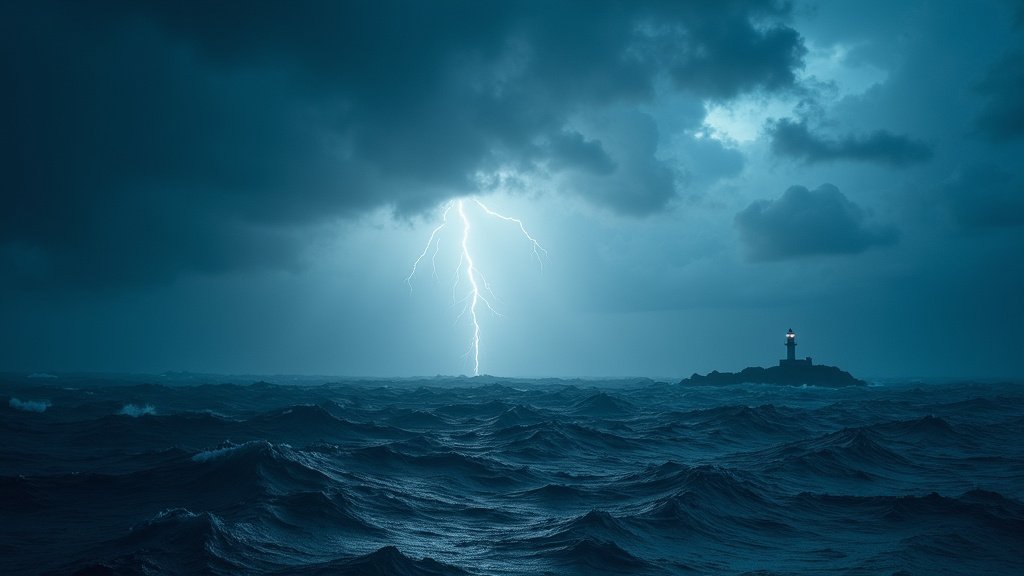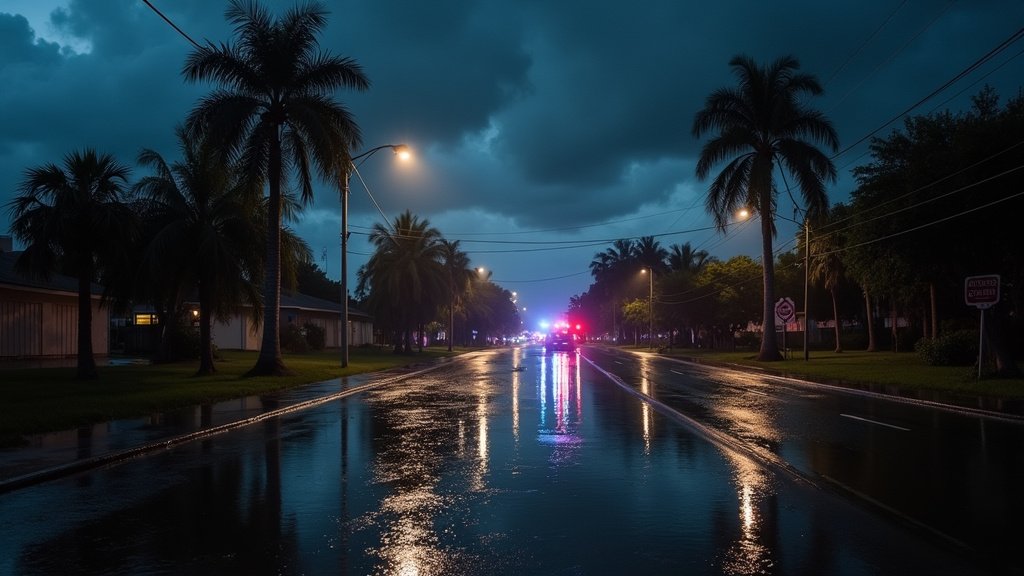Tropical Storm Gabrielle has officially formed in the central Atlantic Ocean on Wednesday morning, marking the seventh named storm of the 2025 Atlantic hurricane season. Forecasters at the National Hurricane Center (NHC) predict the storm will strengthen into a hurricane over the weekend, though its current projected path indicates it will remain over open waters and steer clear of the United States, including Florida.
Gabrielle Emerges in the Atlantic
Tropical Storm Gabrielle was designated by the National Hurricane Center on Wednesday, September 17, 2025, after developing from Tropical Depression Seven. The system, initially investigated as Invest 92L, has organized sufficiently to earn its name. As of the NHC’s 11 a.m. advisory, Gabrielle was situated approximately 1,085 miles east of the northern Leeward Islands, churning with maximum sustained winds of 45 mph and moving north-northwest at a brisk 22 mph. This formation comes after a relatively quiet period in the Atlantic tropics during the typical peak of hurricane season.
While the storm battled initial dry air and wind shear, it has moved into an environment now considered more conducive for development. Computer forecast models largely agree that Gabrielle is expected to continue strengthening, potentially reaching hurricane strength by Sunday. Its trajectory is forecast to take it north of the Caribbean islands and away from the U.S. East Coast.
Florida and U.S. East Coast Remain Outside the Cone
Residents along the U.S. East Coast, including those in Florida and Miami, can breathe a sigh of relief as current forecasts show Tropical Storm Gabrielle posing no direct threat to land. The projected path indicates the storm will curve to the northeast into the open Atlantic. However, forecasters advise that increased wave action, surf, and the risk of rip currents could still affect East Coast beaches over the weekend, though these impacts are expected to be at a safe distance from the mainland.
The National Hurricane Center’s forecast cone, which represents the most likely path of the storm’s center, does not currently include any U.S. landmasses. This trend is a welcome development for a region that has experienced a generally calm start to the latter half of the Atlantic hurricane season. Despite predictions for an above-normal season from NOAA, activity had been limited until Gabrielle’s formation.
Bermuda on Alert as Storm Approaches Hurricane Strength
While the U.S. appears to be in the clear, the island of Bermuda is being closely monitored as a potential target for Tropical Storm Gabrielle. Long-term projections suggest that Gabrielle could approach the island next week, possibly as a Category 1 hurricane. Interests in Bermuda are urged to stay informed and monitor updates from meteorological agencies.
Forecasters note that the storm’s path this far out is subject to change, and any shift could alter its proximity to Bermuda. The forecast models show Gabrielle passing to the east of the island, but the possibility of wind, rain, and rough surf remains a concern for the region.
Broader Atlantic Hurricane Season Context
The formation of Tropical Storm Gabrielle highlights that the Atlantic hurricane season, which officially runs until November 30, remains active. Historically, a significant portion of tropical activity occurs after the climatological peak on September 10. Last year, 2024, saw major hurricanes like Helene and Milton emerge later in the season, underscoring the potential for late-season storms.
Gabrielle is the seventh named storm of 2025, following Tropical Storm Fernand and Hurricane Erin. Forecasters anticipate Gabrielle will strengthen over the coming days, becoming the second hurricane of the season. After its potential encounter with Bermuda, the storm is expected to continue moving into the cooler waters of the North Atlantic, where it is likely to weaken and dissipate.
Monitoring Other Atlantic Systems
The NHC is also keeping an eye on a tropical wave located in the eastern Atlantic, several hundred miles east-southeast of the Cape Verde Islands. This system is currently producing disorganized showers and thunderstorms, with environmental conditions being only marginally conducive for development. Forecasters have assigned it a low chance of developing into a tropical depression or storm within the next seven days, giving it a 20% chance. Should this wave develop, it would be named Humberto.
Continued Vigilance Advised
As Tropical Storm Gabrielle tracks across the Atlantic, its trajectory away from the U.S. brings a sense of relief. However, the storm’s intensification into a hurricane and its potential impact on Bermuda serve as a reminder of the ongoing nature of hurricane season. Residents and officials, particularly in Bermuda, are advised to remain vigilant and follow the latest news and advisories from the National Hurricane Center.





